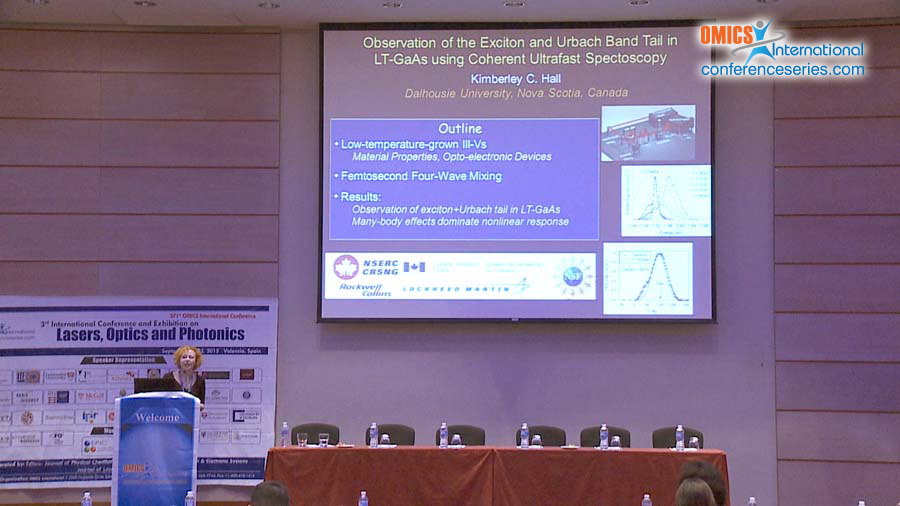
Kimberley C Hall
Dalhousie University, Canada
Title: Observation the exciton and Urbach band tail in low-temperature-grown GaAs using coherent ultrafast spectroscopy
Biography
Biography: Kimberley C Hall
Abstract
Low-temperature-grown GaAs is currently being applied in a wide range of ultrafast optoelectronic devices, including fast photodetectors, and photoconductive components for both CW and time-domain THz photonics. The attractive properties of this material for such applications, including a large dark resisitivity and short photocarier lifetime, stem from the introduction of excess As in the form of AsGapoint defects during growth at low temperatures.A comprehensive understanding of the ultrafast response of LT-GaAs is essential to optimize device performance as well as to further applications of related low-temperature-grown semiconductors including III-Mn-V spintronic materials and LT-InGaAs. We have applied femtosecond four-wave mixing to study the coherent carrier response of LT-GaAs. These experiments reveal clear signatures associated with the free-carrier-interband transitions, the Urbach band tail, and the fundamental exciton. The latter two features are inaccessible using linear spectroscopy due to strong band-edge broadening tied to optical transitions associated with the As impurity band, a contribution we show to be suppressed in the four-wave mixing response due to the enhanced sensitivity to the optical joint density of states relative to linear spectroscopy and the sensitivity of the signal to many-body effects. The spectral structure of the Urbach band tail revealed in our experiments provides a direct measure of the effective band gap in LT-GaAs, and will provide input into theoretical models of the electronic structure in the presence of As-related disorder.

